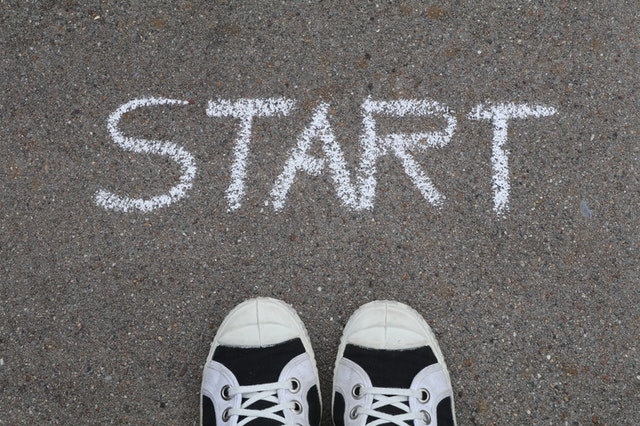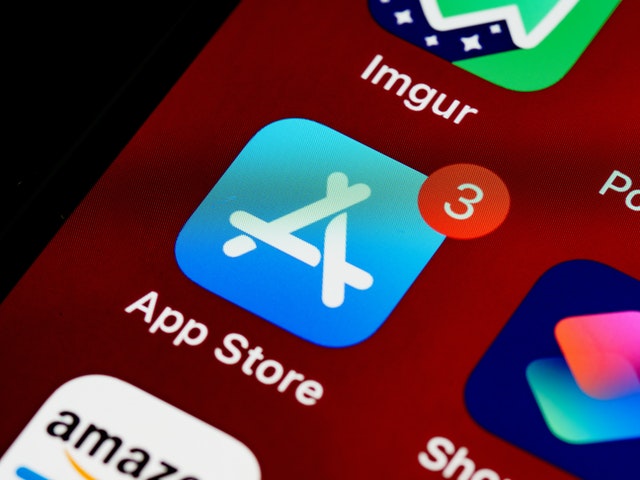Everything Begins With An Idea..Including An Ahead-Of-The-Pack App
‘Dad, I have an idea!’ – be it before leaving to school or while being driven back from her aerobics classes, during a Disneyland vacay or at the Thanksgiving dinner, my daughter has been exclaiming so in various contexts since she became verbally active and I have always been curious about what’s it this time.
Sometimes I snorted over juice on the breakfast table but sometimes, I’m confused whether I should praise my genes or my wife’s!
That’s the beauty of an idea – the reason words like ‘pathbreaking’ , ‘game changing’ et al. exist!
“I have an idea for an app” – that’s possibly what drew you here and you’re about to get your “how to start an app?” query sorted!
Already Have an Idea?
Try Our Free App Cost Calculator
But before we begin with a guided tour , here’s a quick disclaimer :
THIS ARTICLE IS NOT GOING TO BE A VIRTUAL VERSION OF EITHER –
Your over optimistic best friend’s “your idea is the best” kinda expression that go flat over time like the fizz within a beer can once opened
OR,
Your pessimist colleague-next-desk’s “hey that’s s**t” kinda grumpy reaction to every damn thing you come up with!
In simple words, here’s the comprehensive routemap for transiting your idea to an app, and a helping hand for foolproof app development !
I Have An Idea For An App – How To Start An App?
Everyone knows an app is never a Midas touch affair but what’s the way then?
Almost everyone around you has an opinion on that as well, even when most of them have no practical experience with an app at all.
However, we have some questions for you first, here it goes :
- Do you have a time management plan ready to work on your app dedicatedly?
- How do you see your app in mind – the central business or a source of side income?
- Are you all set to spend on experienced developers or would make do with freelancers?
- Do you have concrete logic ready-at-hand why your users will love your app – as much as you do it in this ideation stage?
The above questions might not be as easy as “What’s your favorite color?” to answer at this moment and might as well be a little overwhelming.
But, without having these knots detangled (read, prologue!) , starting with your app idea would probably be no different than starting a car without fuel (or, at zero charge in case you’re thinking of Tesla).
However here’s what you have been looking for, without further ado, the ABCs of executing an app idea, straight from the horse’s mouth – read along if you’re sorted in the above areas or come back when you are (we’ll wait)!
[1] Research Digs Out “Possibility” When Assumptions Spell “Impossible”
A lot are probably reminding you of statistics like,
“The number of apps available for download is 3.14 million on the Google Play Store and 1.96 million on the Apple App Store..Well, the competition is…”
That, for sure, isn’t a reason to switch your brain to auto-pilot mode pushing your app idea to the backseat, especially so when it has dragged you here, looking for effective execution. Instead, start doing what you do..
Before picking a never-been-before vacay destination or a new place to dine-out,
Before investing in a company,
Before renting a space,
Before choosing a school for your kid,
Basically, before taking any important decisions.
Yes, we mean ‘Research’ – which isn’t an alien term to you undoubtedly (as that’s what made us meet!) and that’s exactly what lays the foundation for your app idea.
Just when you wonder “how to start an app”, start with a planned research. Even though research apparently means hovering all over the internet trying to absorb all possible relevant information, the ‘effective’ way of doing so is to start with a set of questions whose answers have a big say on your topic of research. In this context i.e. starting an app, hunting answers for the following questions (and more, related to what your app idea is about) can be a good starting point!
[i] What market will my app fit in?
[ii] What problem does my app solve effectively?
[iii] Who are the target customers for my app (demographically, gender-lifestyle-tech savviness wise)?
[iv] Why would the target customer turn to my app i.e. what difference does my app make which the competitors are not doing / doing similarly yet?
[v] What devices are the target users currently using and how frequently?
[vi] What are the drawbacks of my app idea and how can it be fixed?
[vii] Where does your app aim to be present?
[viii] What are the possible monetization opportunities for my app?
[ix] How can the future players in the same field overshadow my app?
[x] Is my app taking care of the aspects that users complain about in the competitors’ review section?
[2] Change The Backdrop Of Your Idea From ‘Imagination’ To ‘Contemporary Business Scenario’
I remember when I used to dream of my own business during my university days, I used to emphasize more on color coordinated bean bags & a cafeteria brewing creamy latte than the actual business workflow.
Our brains have this beautiful ability of imagining things in technicolor, but oh! the professional world doesn’t work like that. So, to transcend the app idea from head to hand, putting your thoughts out on pen-and-paper (digital documentation works as well) is that desired filtration you must not skip to take the fillers out of your core fab app idea and get to the next step. A clear look at the jotted down sequential business logic you’ve plotted your app idea against, also makes room for more realistic innovation here and there.
Pro Tip : Break the idea down into primary aspects of a business namely, development strategy, marketing strategy, financial planning etc. for a more enhanced execution ahead.
Hey, is your idea targeting the food delivery sector? This comprehensive guide on how to develop app like Uber Eats can be your goldmine for accelerated growth!"
[3] Get Yourself A Second Eye To All That You ‘See-Analyse-Decide’ : Think ‘Co-Founder’
You need a cofounder exactly why a pencil and an eraser need one another – to remove the fluff when required and to create something afresh. Simply, with a cofounder complementing your skillset, there’s ample space for more innovation, more perspectives, a double check at every decision. Often, it’s hard to solve a particular issue because we only look at it from one side, while someone else can see the other side to it and solve it promptly. Sure, getting someone along when the issue arises is fine, but imagine the trouble it will be to make the person understand everything from the ‘How to start an app’ phase to ‘Yeay! app is live’ to ‘Oops, what happened to my app!’ i.e. the time the issue came along..enormous! Not even starting with the disparity between what the app’s background was, how interpretable it was and most importantly, what they understand out of it. That’s the end-to-end struggle a cofounder can save you from. So, if ‘sharing your stress & early expenses’, ‘faster risk management’, ‘stronger strategies’ are on your cards, getting a cofounder is imperative.
[4] An Idea Is Great..Only If Action Follows – So, Act Err. Develop!
If you are a developer yourself and have significant experience with launching successful apps, there’s nothing like it.
But, if you’re not a coding maestro or choose to put your app in hands that are having diverse tech expertise, this paragraph is your friend-in-need and thus, a folk indeed.
Pro Tip: While setting a timeline & budget for app development, make sure it is realistic if you don’t want to compromise on the complexity of your app’s logic or the quality for that matter!
Have a quick look at the app development cost of recent times to get that budget estimation right!
[Bonus]
Develop an employee monitoring software to make sure your idea gets the best supportive workforce with every employee on their toes
Others’ ‘Extra Mile’ is Binaryfolks’ ‘Part Of The Process’;
Because There’s No Shortcut To ‘Facebook’, Unless You Won’t Mind A Freshman’s Live Chat Project In The Name Of FB!
Choosing the right development partner can be tricky – just look at the number of listings and self proclaimed ‘best outsourcing partners’ mushrooming all over the internet search results!
When it comes to your development needs, if you prioritise an app development team with..
[i] A Successful Track Record
[ii] Proven Tech Expertise
[iii] Identical ‘Discussed’ & ‘Delivered’
[iv] Constant & Crystal-Clear Communication
Binaryfolks and your app idea – it’s a match!
[5] Plan The Launch – Draft A Marketing Map
A product doesn’t sell itself off the shelves, marketing does! So, creating a plan to bridge the gap between the app and its target users is just as important as developing the app.
From ‘finding the right social media’ to ‘blogging right’ to ‘finalizing on a logo that stands by your app’s motive’..there are many points to cover. Below are the ‘must-haves’, get them checked!
[i] App Branding – The Forever Best Bet!
‘Just do it’ – did it flash the swoosh in front of your eyes in a heartbeat?
App branding, too, eyes recognizability and it’s tried & tested, ad infinitum.
Is your app idea eyeing the fitness space? Here's our fitess app development guide just in case you'd like to have a look!
So, make sure you infuse the essence of your app entirely within the following visual carriers of your app identity :
(a) Graphics (Logo & App Icon + Mascot + Images + Branded Interactive Elements)
(b) Keywords ( Descriptor + Brand + Brand-plus)
(c) Copy (Name + Tagline + Style)
(d) Social Networking Profiles
(e) Landing Pages
[ii] ASO – The Tool To Limelight!
It’s true that the total number of apps already existing in the major app stores shouldn’t scare your app idea away, but only as long as you can commit to reaching it to your target users. So here’s the next ‘how’ after ‘how to start an app’? Through ASO (App Store Optimization), of course. ASO isn’t rocket science, just a matter of a little time and effort for improved visibility and keeping a thousand downloads stuck to your radar. Let’s zoom into it.
Reportedly, 65% of downloads come from the App Store searches.
That means, your app’s success is based on what number it appears at an in-app store search.
SEO is a familiar concept to almost everyone who’s well versed with Google’s basic working funda, and like the process of search engine optimisation determines how websites rank on Google searches, ASO controls how apps rank on the searches within the app stores. The benefits of ASO are many, including (but not limited to) organic installs, reach expansion, increased revenue, app stability etc. which also imply a longer lifespan within the app stores.
Now, that was about the ‘why’ but what’s the point if you don’t know the ‘how’ – like, how many have reached the pink of health just knowing the benefits of a nutritious diet (and not actually following it!)?
Let’s quickly glance through the ‘how’s of ASO that matter! To nail the “visibility to traffic to download” game, focus on :
On-Page Factors
(a) App title & description
(b) App store keywords
(c) Usage of the app
(d) Number of downloads
(e) Rate Of uninstalls
Off-Page Factors
(a) Backlinks
(b) Reviews & Ratings
(c) Download statistics
[iii] Don’t Miss Out On The Marketing Opportunities That Cost Almost Nothing!
If you are a strong believer that every marketing technique comes with a significant pocket pinch, it’s time to break the myth !
No, not kidding, a little effort investment goes a long way, if channelized well enough. How ‘well’, you wonder? Coming straight to that !
(a) Make your network work!
Don’t be content with just the likes on your filtered vacay snaps (that almost no one else cares about), share your app launch with them and insist on downloading the app and rating it HONESTLY. Because a forced 5 star is hardly ever convincing (especially when Whatsapp is a 4.2!).
(b) Blow your trumpet, because if you don’t tell – they won’t know (Grow FOMO!)
This is a big world evolving with a crazy pace and apps are multiplying in number like Covid cases in 2020. No one wakes up one fine morning and decides on exploring the app universe to bump into a random one, analyse its pros and cons to finally download and use. Even if they did, chances are very close to zero that the chosen ‘random’ app will be yours. So don’t leave it to the luck and talk about your app in as many ways as you can, over as many social media platforms as you can!
(c) Be Where Your Users Are
How did you find that time tracking app during the WFH period to keep an eye on productivity?
You Googled, most probably.
That’s how we go about most of our requirements, be it fresh apple or an innovative app, we search somewhere on the internet.
Out of all that helps us zero down on a decision, listings, Reddit & Quora talks, review sites, blogs are common spaces of faith.
That makes the way to visibility as clear as daylight – post yourself wherever you can or request listing or review sites / bloggers and finally, ‘BE THERE’ !
[6] “Test Before You Launch” Is The “Look Before You Leap” Moral Of The App Bible
Think of prepping a drool-worthy apple-pie only to find out the base is burnt when the guest takes a bite.
Testing, in any context, saves from last minute disappointments.
The worse the extent of probable disappointment, the higher the priority of testing beforehands – you can bake another apple pie in under 15 minutes, but redoing the app is nothing lesser than a nightmare. Given that, ‘How to test my app?’ or even ‘Why to..?’ should spin in your head after you’re sorted with the primary ‘How to start an app?’ dilemma.
Running your app through multi level tests comes with some added benefits, increased accuracy, enhanced functionalities, smaller feedback & improvement loop and intuitive usability are just a few of those.
The process is simple : identify your testers (those who are well aware of your app idea & have expectations on-point) – set a timeframe – get them to work – collect feedback – work on it – repeat (the more cycle count, the better!).
[7] Nestle In The App Stores & Remember Improvisation Is Your App’s Key To Survival
Remember the saying “Every finishing line is the beginning of a new race” ?
An app launch is a classic example of that.
As it may seem publishing the app is the ‘done ‘n dusted’ step, but actually, the real hustle begins from there.
To keep the hustle ‘happy’ all you need to do is make innovation part of your app’s daily regimen and schedule planned updates. Be it ‘feature addition’, ‘following feedback’, ‘fixing bugs’, ‘working on pulling up retention rate’ or ‘digging in more monetization opportunities’- improvisation must go on .
Now That I Know How To Start An App, I’m Wondering..
[1] How To Protect App Idea (And The App!)
“I have an idea for an app” is closely followed by the thought “What if my app idea is stolen and launched?” and it’s legit.
So, don’t get so engrossed in the development side that you totally miss out on the protection part. The word ‘protection’ looks like the big picture and to understand the nitty-gritties we got to zoom in. Here’s how you can make your app safe at the adobe err. app stores :
[i] From Vendors To Freelancers – Follow Your First ‘Hi’ With An NDA
Simply put, NDA is the ‘pinky promise’ in the corporate space with legal consequences involved in it. By mutually signing a Non-Disclosure Agreement (NDA) you ensure every bit of the information you share is kept confidential between you and the other signee.
Whether you collaborate with freelancers/ a team or pitch it to an investor, get this legal documentation done first. The focus should be more on the timing of the NDA signing rather than just signing it as a matter of formality – remember, the right time to sign is right before the first app-talk.
[ii] IP Rights First..Coffee Can Wait
Be it a developer’s code for your app or a designer’s work on your logo – would you want them to showcase the same in their portfolio or somewhere else?
Probably not!
Involving Intellectual Property Protection in your contract would ensure your brainchild stays solely under your control in terms of usage.
Basically, an ideal IP right should cover ownership over content, graphics, code and every other element unique in your app idea. Also, by virtue of these IP rights, no vendor / freelancer or anyone contributing to the app other than you can claim any part of the project of their own without your permission.
Here’s a telescopic view of IP rights, the ‘make or cripple’ factor for your app’s unique identity :
(a) Copyright App..Because ‘Writing In Stone’ Isn’t Practical
Copyright deals with authenticity of original literary and (or) creative content & the expression of the thought. Put in the app’s context, the codes and the end-to-end look and feel of the app including audio visuals are secured under a copyright. The best time to copyright app is as soon as it’s ready.
(b) A Trademark App Keeps The Appearance Legally ‘Yours’
A trademark symbolizes that the specific service/ product as offered by an individual/ a business is not for public usage. For apps, the name and logo are some of the distinguishing assets and that may be copied by the competitors to mock the appearance for misleading the customer base towards itself. A registered trademark app speaks for the reserved rights by establishing authenticity while hinting at legal actions if infringed. The ideal time to get a trademark is when the number of downloads start to soar higher, steadily.
(c) Patent App to protect your invention
Patent, by far, is the most reliable protection for your app idea. However, like no good things come easy, patenting is possible only when a set of criteria is met. The primary condition is that your app idea is a proven true invention i.e. useful, non-obvious & novel. That implies, if the idea is patented once, it can’t get a patent again.
(d) Either it’s a Trade Secret or No Secret
Trade secrets are confidential information IP rights preventing its sale or duplicate licensing. To make it a TS, make sure:
It’s not a public information and known to selected individuals
The secrecy is associated with your i.e. the holder’s economic benefit
There goes in active effort to maintain secrecy of the information
TS can be protected by an NDA with any third parties you work with.
[2] How To Sell App Idea
Developing your app idea to a real app on your own might sound all exciting and a milder pinch in the pocket, but the challenges are many. The app universe is ever-expanding and developing a basic app & following a basic promotional plan isn’t taking you anywhere or doing any justice to your app idea which could otherwise blow minds. To make sure your idea is put to use at the extent you have pictured it to, there’s no shortcut to a solid execution by expert hands & carrying out brilliant campaigns and that obviously needs fair investment. Here comes the next ‘how’, i.e. ‘how to sell app idea’,
Let’s face it: selling an idea is always more difficult than selling a full-blown functional product / service. Ideas are like air – they are everywhere and so, if it doesn’t challenge the status quo for better, it’s not worth selling. So, tip 101 is, while thinking of selling an idea, develop your idea into a working prototype first, as this can be the practical proof of what’s in your head. And then, unless you are a Casino confident chap ready to gamble your saved bucks, look for funding.
Where to find the funds ? Here’s where !
[i] Run Crowdfunding Campaigns
How about verifying if your app idea is really able to earn pats-on-the-back from the target users while getting some funding?
That might look too good to be true, but thanks to the crowdfunding websites for making it possible. So, here you can present the app idea and that’s how you start a crowdfunding campaign. Here, your idea is read-analyzed-thought out by a community of innova-tech enthusiasts (i.e. the crowd you are expecting the funds from) and funded if appreciated.
[ii] Attend Start-Up Conferences : Because, What You Seek (Investors) Is Seeking You
Business ideas and investors – both seek one another and even though mistaken a lot of times, it’s actually a two-way process. So, what potentially bridges them ? Start-up conferences, most commonly! Be there – interact with the investors – show your app’s worth and then, get investments from the interested investors (and make connections for future needs).
[iii] Connect With Venture Capitalists
Venture capital firms or funds have gained significant popularity over the last few years since the startup concept has become a household concept (so much, that my daughter wants to run her own art & crafts startup at 12 already!). The funds from this source come in exchange for equity, implying venture capitalists are those financial risk takers who invest in potent startups in the initial stage, where there’s some chances of a bright future.
[iv] Startup Accelerators & Business Incubators Bridge Ideas To Execution
As the names suggest, the startup accelerators and business incubators help carry out the processing of an idea into a fully-fledged commercial project. The ‘help’ includes mentoring and relevant assistance along with seed investment opportunities. The best part? They are mostly available locally, so finding them is comparatively easier.
[3] How To Pitch An App Idea
Development – Checked.
Marketing – Checked.
Selling – Checked.
All sorted with ‘How to start an app’ ?
…..What about pitching the idea to the investor chosen..thought about it yet?
Let’s come to that now, here’s how to pitch an app idea :
[i] Must-Have Components of A Pitch Deck
Your app needs more than its name and description to enter the business scenario, and yes, interaction with investors counts – so, you need a business plan. Keep in mind whom you are seeking funds from, are looking at an array of other ideas just like yours and they can’t spend forever trying to absorb your app idea. A pitch deck is the magic wand that can set your idea apart if prepped well.
Make sure your pitch deck isn’t text-heavy yet expresses the idea to the fullest, using storytelling – explanatory infographics – demo video – clear fonts, sticking to a smart business tone, covering the following areas end-to-end :
(a) Names and idea title
(b) Team with respective skills
(c) The problem you want to solve and how
(d) How it works, ideally with a functional prototype
(e) Competitive advantage
(f) Business model
(g) Market survey results
(h) Competitors management plan
(i) Financial nitty-gritties
(j) Contacts involved
[ii] Investor & Pitch – What’s The Link?
So, potential investors can be many, and you may be thinking of forwarding a standardized pitch to all of them.
Hard luck with acceptance, then!
Instead, figure out the:
(a) Type of investor you’re pitching to
(b) Average amount they have invested per project so far
(c) Common points amidst the projects they have invested in
(d) Success rate of projects they invested in
(e) Personality of chosen investor(s)
Every type of investor is different and so is the way to make your idea appealing to them. So, you have to opt for personalization in your pitch. A personalized pitch speaks for your extra effort to incorporate their values and language & thus, boosts up possibilities of your company getting the investment you’re eyeing.
[iii] Focal Points Of A Pitch Deck
Are you making your app the centre of attention in your pitch deck?
If yes, then stop right there.
Investors look at your idea, subtracting the emotion that’s in your heart and the flood of efforts that you keep a count of, in your head – for them your idea is what you put in the pitch deck and so, the proof of all better be there.
Here’s a quick fact check that deserves to share the limelight with your app :
(a) If your idea is cutting-edge
(b) If it fulfills contemporary needs
(c) If it does at least one unique problem-solving that no other existing one has done/ is doing similarly
(d) If it opens up opportunities to draw significant revenue
(e) If your expertise is proven and well established in one (or, many!) sector(s)
Remember, investors don’t just invest when there's a possibility of mammoth profit, they are ready to invest in the elephant profitable (read, modest enough to be called ‘profitable’) ones too.
Pro tip: Remember to throw optimism here and there in your approach – because, if you are not optimistic about your app idea, hard chances with investors being so!
[iv] Rules To Pitch An App Idea
First, sink in the fact that pitching your app idea is not the same as describing your app to the target audiences. Here’s how to make your pitch sound like one :
(a) Make sure your pitch looks lucrative to the investors i.e. highlight compelling opportunities for investment
(b) Keep your competitors in mind i.e. focus on your USP
(c) Emphasize on your app’s take on the target users’ pain points
(d) Prove financial sustainability
(e) Take your functional MVP along
(f) Keep your pitch crisp yet informative
Good Luck Note
Voila! You have all the ingredients at your disposal and it’s time to churn out the app of your dreams. Excited ? We sure are, to see your app shining bright in the app universe!
Whether it’s to discuss development or let us know about how our ‘how to start an app’ guide helped you launch your app, don’t forget to













